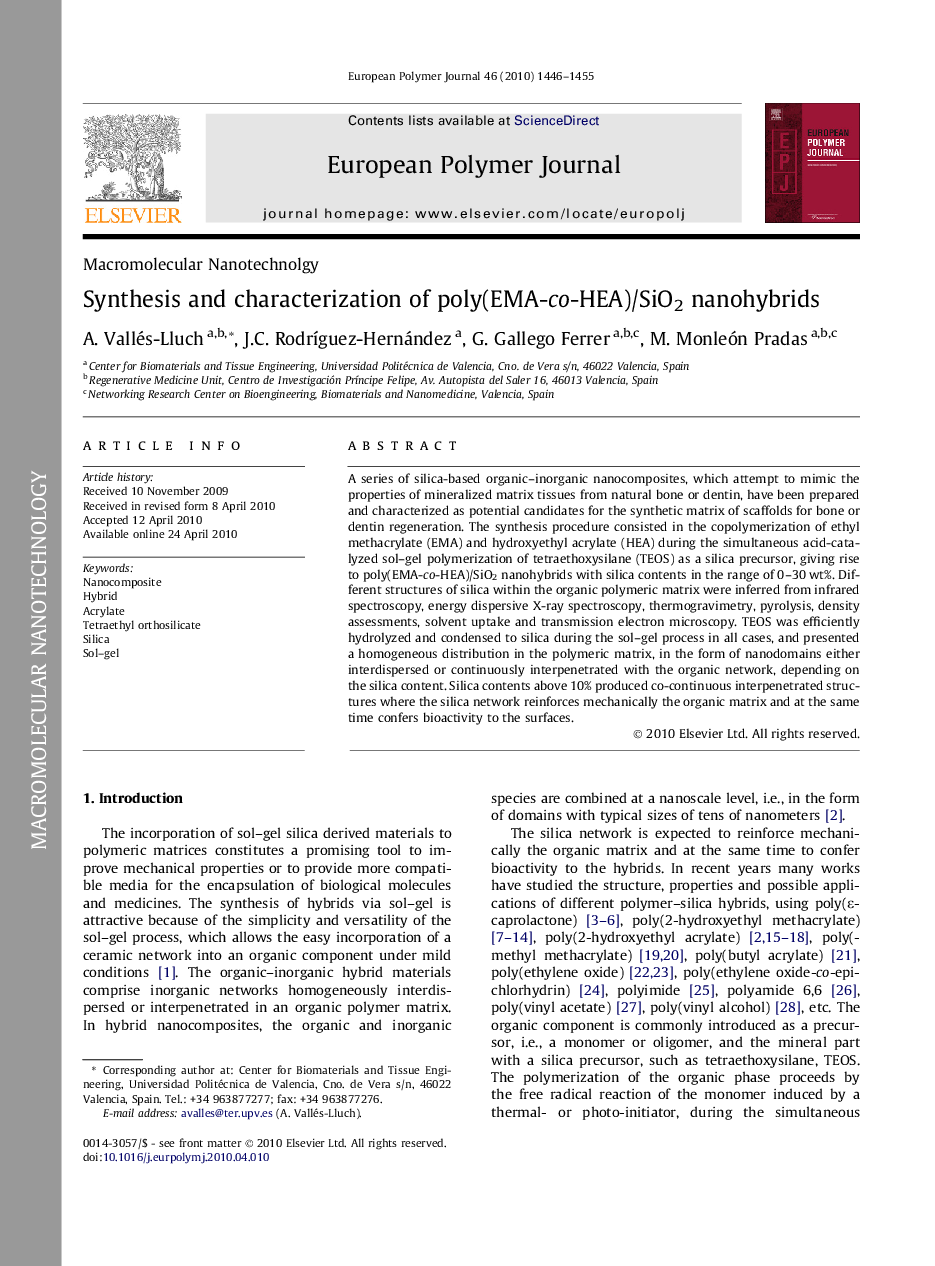| Article ID | Journal | Published Year | Pages | File Type |
|---|---|---|---|---|
| 1402234 | European Polymer Journal | 2010 | 10 Pages |
A series of silica-based organic–inorganic nanocomposites, which attempt to mimic the properties of mineralized matrix tissues from natural bone or dentin, have been prepared and characterized as potential candidates for the synthetic matrix of scaffolds for bone or dentin regeneration. The synthesis procedure consisted in the copolymerization of ethyl methacrylate (EMA) and hydroxyethyl acrylate (HEA) during the simultaneous acid-catalyzed sol–gel polymerization of tetraethoxysilane (TEOS) as a silica precursor, giving rise to poly(EMA-co-HEA)/SiO2 nanohybrids with silica contents in the range of 0–30 wt%. Different structures of silica within the organic polymeric matrix were inferred from infrared spectroscopy, energy dispersive X-ray spectroscopy, thermogravimetry, pyrolysis, density assessments, solvent uptake and transmission electron microscopy. TEOS was efficiently hydrolyzed and condensed to silica during the sol–gel process in all cases, and presented a homogeneous distribution in the polymeric matrix, in the form of nanodomains either interdispersed or continuously interpenetrated with the organic network, depending on the silica content. Silica contents above 10% produced co-continuous interpenetrated structures where the silica network reinforces mechanically the organic matrix and at the same time confers bioactivity to the surfaces.
Graphical abstractFigure optionsDownload full-size imageDownload as PowerPoint slide
